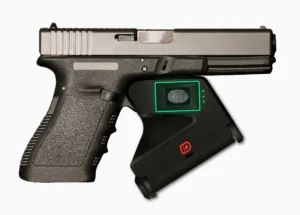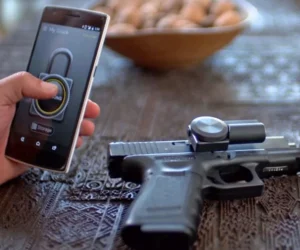As technology advances rapidly, its integration into various aspects of daily life is inevitable. Firearms are among the most notable areas where innovation is making a significant impact. Innovative gun technology, once a concept relegated to science fiction, is now emerging as a viable solution to enhance gun safety and reduce firearm-related accidents and unauthorized use. This article delves into the latest developments in smart gun technology, its safety benefits, and the potential market for these innovative firearms.
What is Smart Gun Technology?
Smart guns, also known as personalized firearms, are designed to incorporate safety mechanisms that prevent unauthorized users from firing weapons. These guns typically use biometric recognition, such as fingerprint scanning, RFID (Radio Frequency Identification) chips, or other digital authentication methods to ensure that only the rightful owner can operate the firearm.
The Latest Developments in Smart Gun Technology
Biometric Sensors: The biometric sensor is the most common and widely recognized feature in smart guns. These sensors, often integrated into the firearm’s grip, require the user to place their fingerprint on a scanner to unlock the weapon. Companies like LodeStar Works and Biofire are at the forefront of this technology. Biofire recently unveiled a smart gun that uses a combination of fingerprint and facial recognition to unlock.

RFID Technology: Another approach involves RFID chips. The gun only operates near a corresponding RFID tag, which the authorized user could wear as a bracelet or ring. This method ensures that even if the firearm is stolen or lost, it cannot be used by anyone without the corresponding tag.

Remote Control and Locking Mechanisms: Some smart guns are being developed with features that allow the owner to lock or turn off the firearm remotely using a smartphone app. This could be particularly useful in scenarios where the gun is stolen or misplaced, providing an extra layer of security.
The Safety Benefits of Smart Guns
The primary objective of smart gun technology is to enhance safety and reduce the risk of gun-related accidents and unauthorized use. Here are some key safety benefits:
- Prevention of Accidental Discharges: One of the most significant advantages of smart guns is their ability to prevent accidental discharges. With biometric locks or RFID requirements, a child or other unauthorized individual cannot fire the weapon, significantly reducing the risk of tragic accidents in homes.
- Reduced Gun Theft Risks: Smart guns offer a level of security that traditional firearms cannot. Even if a smart gun is stolen, it cannot be fired without proper authentication, making it less attractive to thieves and reducing the risk of it being used in a crime.
- Law Enforcement and Military Applications: For law enforcement and military personnel, smart guns could provide an additional safeguard against their weapons being used against them. If a firearm is taken during a struggle, it would be rendered useless to the attacker without the proper authentication.
- Deterrence of Unauthorized Use: In situations where a firearm owner loses control of their weapon, such as during a robbery or assault, the smart gun’s security features could prevent the perpetrator from using it, potentially saving lives.
The Market for Smart Guns
The market for smart guns is still in its early stages, but various sectors, including individual consumers, law enforcement agencies, and even governments, are showing growing interest.
- Consumer Market: As awareness of gun safety continues to rise, particularly in countries like the United States, where gun ownership is prevalent, there is a significant potential market among responsible gun owners. Many are willing to invest in technology that ensures their firearms cannot be misused.
- Law Enforcement: Police departments are exploring the potential of smart guns to improve officer safety and prevent the misuse of lost or stolen firearms. While the adoption rate is low, ongoing developments and successful pilot programs could lead to broader acceptance.
- Government and Regulatory Support: Governments, particularly in regions with strict gun control measures, may see smart guns as a way to balance the right to bear arms with public safety. Legislative support for smart gun technology could spur its adoption by creating incentives for manufacturers and consumers alike.
- Challenges to Market Adoption: Despite the potential, some challenges could slow the widespread adoption of smart guns. These include concerns about reliability, cost, and the potential for technological malfunctions. Moreover, some gun rights advocates oppose the idea of any technology that could potentially interfere with the immediate functionality of a firearm, fearing that it could fail in critical moments.
Conclusion
Smart gun technology represents a promising leap forward in firearm safety, offering solutions that could prevent unauthorized use, reduce accidents, and enhance the security of gun owners and the public. As the technology continues to mature and societal demand for safer firearms grows, the market for smart guns will likely expand. However, overcoming the challenges of reliability, cost, and public perception will be vital to unlocking the full potential of this innovative technology. Whether driven by consumer demand, law enforcement needs, or regulatory frameworks, smart guns may be responsible for gun ownership’s future.
